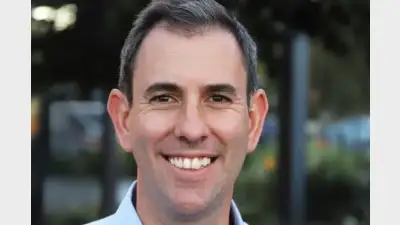Superannuation funds look to insurance for a competitive edge



Having weathered the worst of the global financial crisis, many super funds are reassessing their service offering to members and, as Damon Taylor reports, insurance is definitely back on the agenda.
Having dealt with the trials of 2008 and 2009, most members of the financial services industry — and those within superannuation in particular — are undoubtedly looking forward to a more positive 2010.
Share markets are improving, confidence is coming back and according to Phil Collins, general manager life for International Underwriting Services, the time has come for most funds to put their house in order — particularly with respect to insurance.
"Last year was a difficult year for everyone within financial services," he said. "And most funds will have delayed going to tender or put off altering their existing insurance strategies simply because their focus was being occupied by what they saw as greater challenges at the time.
"I think we saw many funds in a bit of a holding pattern, but now that the pressure has eased somewhat, I expect there’ll be funds looking to implement some of the insurance strategies they were holding off on."
In a similar vein, Jeff Scott, executive manager, business growth services, for CommInsure, said that the global financial crisis had meant that many funds were reluctant to offer additional insurance benefits.
"They did not want to pass along additional costs to their members when their fund balances were low," he said.
"But as investment markets have improved over the past six months, we’ve found more trustees are considering additional insurance benefits for their members."
Richard Anderson, head of institutional business at MetLife, said that the insurance emphasis for super funds over the last 12 to 18 months had been on the broader issues — on underinsurance in particular, but on technology as well.
"If we look at some of the articles we saw addressing underinsurance throughout last year, then it certainly seems that most funds already have decent defaults in place," he said. "They’ve got the basics covered but I can’t see that the focus in 2010 will be on reducing rates.
"I’m expecting funds to be proactive about the benefits that they put in place and, in turn, I’m expecting that insurers will be looking to improve those benefits to reflect positive experiences," continued Anderson. "That should go a fairly long way towards decreasing underinsurance."
Analytics
Yet as Australia’s superannuation industry matures, it seems the complexity of what super funds are offering members is also increasing — if not superficially, then certainly in terms of the systems behind that offering.
Analytics and quantitative data analysis have become a means of providing the best possible superannuation package to members and, not surprisingly, insurance is an integral part of that.
Jim Minto, managing director of Tower Australia, said that funds were looking to insurers and to the data they possessed to help better tailor their insurance offerings.
"Benefits analysis, claims analysis, service standards reporting: super funds are looking for all of it," he said.
"They want to know how long it takes to process a member’s claim end to end, they want to see the cost of different covers, the claims history of different demographics and they want to see it coming straight out of their insurer’s service offering — online rather than through some sort of delayed report.
"Funds want their insurers to help them think more innovatively and, through that innovation, provide optimal solutions for their membership."
Collins said that, from his perspective, those funds going to their insurers and looking for more in the way of data analysis could achieve two things.
"Primarily, they’re looking to be able to address issues that might be causing their premiums to be higher than they need to be," he said.
"Claims data, particularly in the area of income protection insurance, can be of great value in that funds can see what heavily and adversely affects a particular company or segment of their membership."
"The other goal, depending on the sophistication of the data available, is for funds to be able to discover the benefits that are most suitable for different membership demographics," Collins continued.
"To some extent, it’s about enabling funds to make more educated guesses."
Communication
Approaching insurance analytics in a slightly different manner, Paul Trigg, manager of group risk markets for ING, said that data analysis and financial metrics could provide powerful value-adds for funds’ correspondence with their members.
"Claim causes and the amount being paid can be reported by industry or profession, and it can be very interesting to see how claim causes vary," he said.
"Funds can look at what is causing large amounts of claims and, given that there continues to be a widespread misconception that insurers are reluctant to pay claims, they can also provide statistics proving the effectiveness of their insurance offering and showing that their insurer does pay.
"It brings the data down to the level of the individual member and can remove any lingering doubts people may have about their insurance and its ability to protect them."
Providing another angle to the value of technology in insurance provision, Darren Stevens, global head of product for Bravura, said that 2010 had already seen significant drives towards efficiency by both super funds and insurance providers.
"At Bravura, we provide technology solutions to more than 50 superannuation funds across various sectors and, over the past year in particular, we’ve noticed a marked focus shift towards efficiency," he said.
"As competition has heated up, funds have been looking for efficiency and flexibility in their back-office solutions that will allow them to develop and take back to market an improved insurance offering."
With respect to data aggregation and warehousing, Stevens said that funds could use technology and analytics not just to add detail to their communications but also as a tool to know when to communicate.
"It could be something as simple as a change to a member’s details that triggers a targeted insurance interaction," he said.
"If a member changes their address or changes their beneficiary, then that could be used to initiate insurance-specific correspondence or education.
"They could be informed of their current arrangements, what options are available to them and be better informed about insurance — simply as a result of making one small change."
Naturally, data analysis and efficiency gains on this sort of scale do not come without a cost.
Yet when asked what sort of burden providing such services entailed for insurers in terms of technology and personnel, Trigg said that both elements were part and parcel of insurance investment.
"At ING, for instance, we’ve developed RiskWorks, which gives us a broad picture of the ING insurance system. It also allows us to see how a claim is progressing at any given time," he said.
"It’s a process that runs seamlessly from the super fund’s website to ING, and it allows an application to be processed straight through.
"From both a fund and insurer’s perspective, it reduces the dropout rate that can occur when multiple questions have to be fired back and forth between the insurer and the member."
Not surprisingly, Trigg added that while RiskWorks had been the result of significant investment, technology by itself was not enough.
"Technology is the ticket to the game at the moment, but insurance isn’t about technology alone," he said.
"Insurers have to be providing their clients with the whole package: great service, great technology and, above all, experts in the field who have lots of experience."
Speaking about the cost of technology in insurance provision, Stevens said that the burden was nowhere near as big as people might think.
"There are plenty of affordable tools out there that are relatively simple to use," he said. "The more interesting question is whether there are people out there willing to utilise them."
Pricing
But despite an increasing demand for analytics and data analysis, super funds’ insurance focus seems to remain firmly upon price per unit of cover and benefit of design.
Whether one side of the equation takes precedence over the other seems somewhat cyclical, but according to Anderson, insurance premiums have been becoming vanilla for some time now.
"The differences are coming back to the types of benefits available, when they’re available and how easy they are to access," he said.
"As insurers, we’re not under the same pressure to reduce costs that we used to be. That means we can provide a fund’s members with the benefits and accessibility that they need."
Unfortunately, when referring to the insurance and superannuation industries’ understanding of the need for a holistic insurance package (one that covered all elements of insurance rather than focusing on premium or benefits alone), Anderson indicated that both industries had a long way to go.
"I wouldn’t say that is widely understood yet," he said. "But it’s something that the leading super funds are coming to terms with, and it’s certainly sorting out the leaders from the followers."
For Collins, although noticeable premium variations continue to exist within the insurance packages being offered to super funds, it came back to one question: "Do you cross-subsidise or don’t you?
"Is the answer to drill down and have different rates for different categories of workers?" he asked.
"Some funds certainly do that. But the problem is that doing it too much can eliminate cross-subsidies and reduce the benefits inherent in group insurance. It could lead to an unworkable system."
And at the other end of the spectrum, Collins pointed out that not drilling down at all — not tailoring benefits to a fund’s member demographics — could put into place what was effectively a public insurance system.
"Unfortunately, there’s no clear answer here," Collins said. "Every fund has to determine its own needs and how those needs are likely to affect their members’ rates."
Like Anderson, Minto said that he had been gratified to see the insurance game moving away from only being about price.
"Some time ago competitors could enter the group insurance market by being bold and having a lower price point than the rest of the market," he said.
"But before long they’d fall apart because the cultural alignment wasn’t there.
"Price is still important simply because it has to be," Minto continued. "But insurers are failing if that’s all they’re concerned with and if they’re not providing super funds and their members with a relationship and the support they require."
Of course, it should not be surprising that price per unit of cover continues to have such a significant influence upon superannuation trustees.
After all, Australia’s underinsurance gap is a well-publicised and well-understood reality for super funds.
One of the few guaranteed means of reducing that gap lies in raising a member’s default level of cover.
Education
But looking beyond the default, Collins pointed to insurance awareness as the key to the long-term reduction of underinsurance.
"I’ve often said that we have a long way to go until we’re where we need to be with education," he said. "And personally, I’d like to see programs about both superannuation and life insurance within our existing education system.
"The minute a child leaves school, they’re automatically in our super system," Collins added. "They have numerous and potentially significant decisions to make, but they’re ill-equipped for them."
Collins said that in conjunction with the Federal Government, the insurance and superannuation industries had done a great deal to educate current members of the super community — but they had not yet targeted people before their entry into the system.
"All education has a role to play," Collins added. "At the industry level, there’s advertising campaigns and industry movements such as Lifewise.
"Then at a fund level, trustees should be looking at targeted communications," he continued. "That is, giving members information regarding what they need to be making decisions about and which options are available to them.
"But making ground on underinsurance is about all of it — there has to be education at every level."
Reflecting on the insurance industry’s complexity, Minto also suggested that winning the underinsurance battle would be about steady gains over a prolonged period of time.
"This is a huge and confusing industry that we’re talking about," he said.
"It’s not like compulsory third party or comprehensive motor vehicle insurance or home and contents insurance. People understand those things and they understand how they work because they do them every year.
"On the other hand, we’ve got multiple terms in life insurance — income protection and salary continuance — that mean very similar things," continued Minto.
"It’s quite a complex world but despite that, we are slowly seeing awareness rising.
"People are responding to the messages being sent, funds are responding, and while there will always be a degree of ambivalence, insurance has undoubtedly become a large part of what superannuation is offering."
Agreeing with both Minto and Collins, Scott said that awareness through education would continue to be the critical factor.
"The largest insurer in Australia is still the taxpayer," he said. "Centrelink pays out more than $8.6 billion per year in disability support payments — more than double what the life insurance industry in Australia pays — and to reduce that burden on members (via their tax dollars), we need to educate them.
"Twenty years ago, people did not focus on superannuation — it was merely a little bonus to a person’s age pension," Scott continued. "But due to a sustained education program, consumers now realise the value of superannuation to their retirement."
"The same education must be carried out regarding insurance."
Underinsurance remains
Despite a marked improvement in the level of default cover super funds are providing their members, underinsurance remains an issue to be watched closely throughout 2010. But while underinsurance is undoubtedly the most concerning issue, could overinsurance be a trap some funds are falling into?
The issue, according to Minto, is a philosophical one.
"Super funds cannot know the individual circumstances of their members," he said. "They can only generalise, meaning that their default insurance offering is a ‘best guess’ about their members’ needs.
"Funds will obviously err on the side of conservatism, but they also recognise that the default cover they put in place won’t be right for everyone," Minto continued.
"For some people that cover will be too little and for some people it will be too much, but it’s for that very reason that funds include safety valves.
"In the opt-in and opt-out options available to them, members can tailor an insurance cover more suited to their individual needs."
Scott said that while rare, the overinsurance issue related to the reality that there was no ‘one-size-fits-all’ approach to insurance.
"Most funds provide a default level of cover for their members — which is a good thing!" he said.
"But depending upon various factors such as age, number of dependants, debt levels, years to retirement and existing assets, the level of cover required to adequately protect an individual changes."
For Collins, a degree of overinsurance is somewhat inevitable.
"I’m sure there is overinsurance out there, especially in some of the older default levels of death and total permanent disability cover," he said.
"We will inevitably see cover beyond what is needed — particularly in the younger ages — but as long as provided members are aware of their options and their ability to opt up or down the remedy is straightforward."
Stating the issue succinctly, Minto said that underinsurance was clearly the bigger issue.
"Funds are aware of the need to try to get it right with respect to their insurance," he said. "But it’s impossible to tailor a cover for everyone.
"There’s nothing worse than seeing someone pass away without their dependants receiving the benefits they require."
Recommended for you
Australian super funds have posted early gains in FY26, driven by strong share market performance and resilient long-term returns.
Following the roundtable, the Treasurer said the government plans to review the superannuation performance test, stressing that the review does not signal its abolition.
The Australian Prudential Regulation Authority (APRA) has placed superannuation front and centre in its 2025-26 corporate plan, signalling a period of intensified scrutiny over fund expenditure, governance and member outcomes.
Australian Retirement Trust (ART) has become a substantial shareholder in Tabcorp, taking a stake of just over 5 per cent in the gaming and wagering company.












